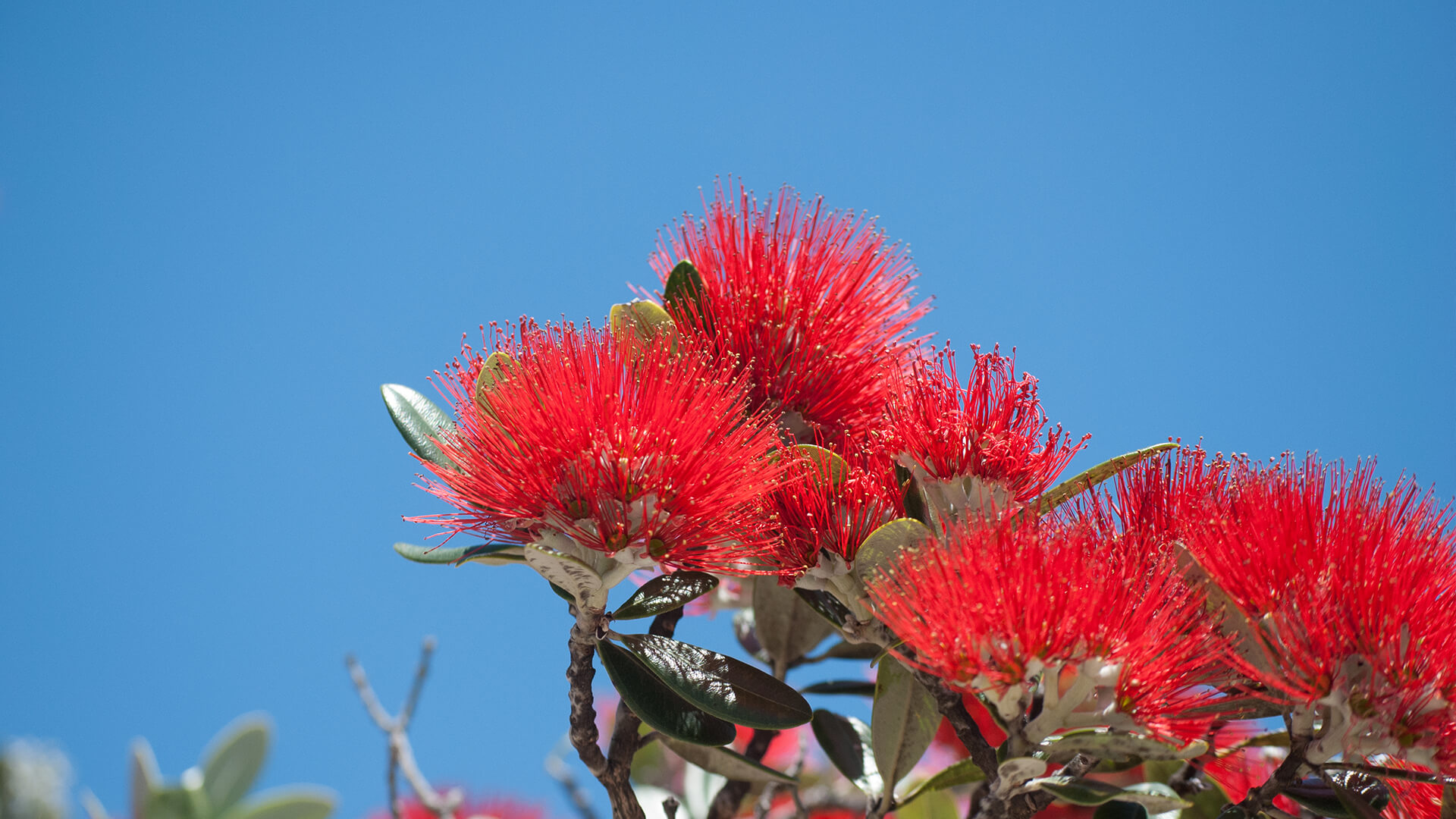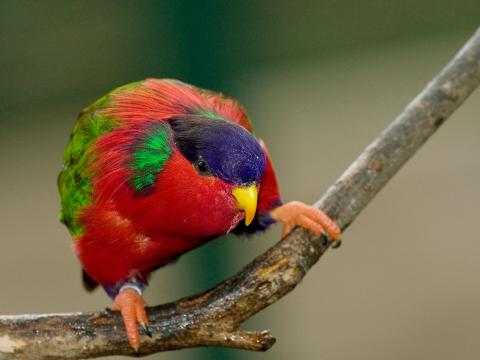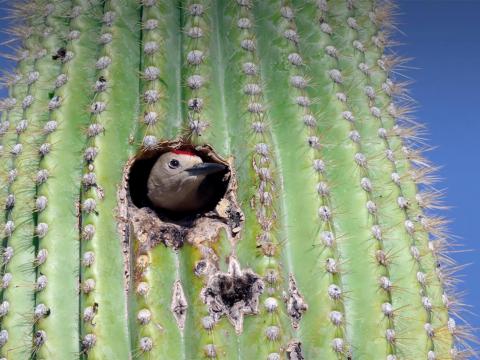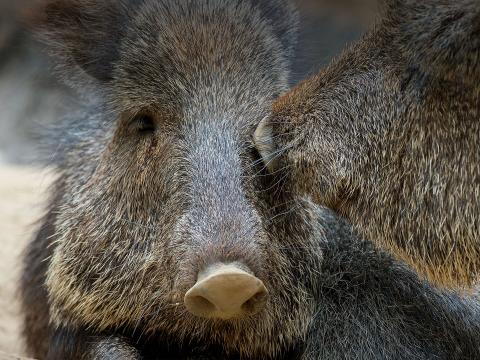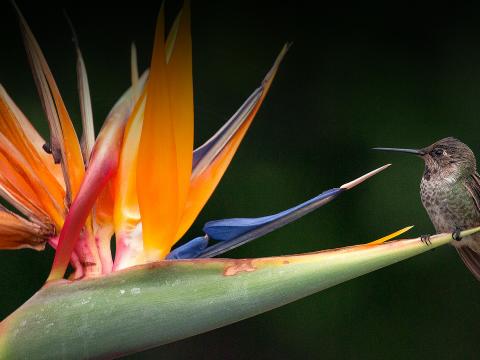New Zealand Christmas Tree
- DIVISION: Tracheophyta (vascular plants)
- CLASS: Magnoliopsida (dicotyledons)
- ORDER: Myrtales
- FAMILY: Myrtaceae
- GENUS: Metrosideros
- SPECIES: excelsus
OVERVIEW
Cheerful masses of bright red flowers burst forth on this tree's branches in early summer. In their native New Zealand, that's around Christmastime. The trees grow in coastal forests of the northern half of New Zealand's North Island, where they thrive in the face of salt spray and strong winds. In some older trees, aerial roots hang from large branches, making the most of coastal fog and humidity. You may encounter a New Zealand Christmas tree closer to home, though; they've been introduced to other warm-climate regions of the world. Up here on the northern half of the globe, they flower in June.
CHARACTERISTICS
An evergreen, this trees grows oblong leaves that are glossy, dark green on top and grayish, with a fine fuzz, on the bottom. The species may grow as a multi-trunked spreading tree or a single-trunked tree with branches close to the ground. Scarlet, bottlebrush-like flowers have both male and female parts. Clusters of pollen-bearing, male parts—called stamens—are the colorful, red parts of the flower. Fertilized flowers produce fruits: velvety gray, half-inch capsules that hold tiny seeds.
CONSERVATION
These trees once grew in a continuous band along the coastline, but European settlement, agriculture, logging, and introduced pests have destroyed about 90 percent of the trees on New Zealand. The silver-gray brush-tail possum Trichosurus vulpecula, an invasive species from Australia, eats its leaves, eventually killing the tree. Nonetheless, these trees have become invasive in certain places, including Japan, Spain, England, and Ireland. In South Africa, they threaten the biodiversity of the distinctive fynbos shrubland.
By supporting San Diego Zoo Wildlife Alliance, you are our ally in saving and protecting wildlife worldwide.

